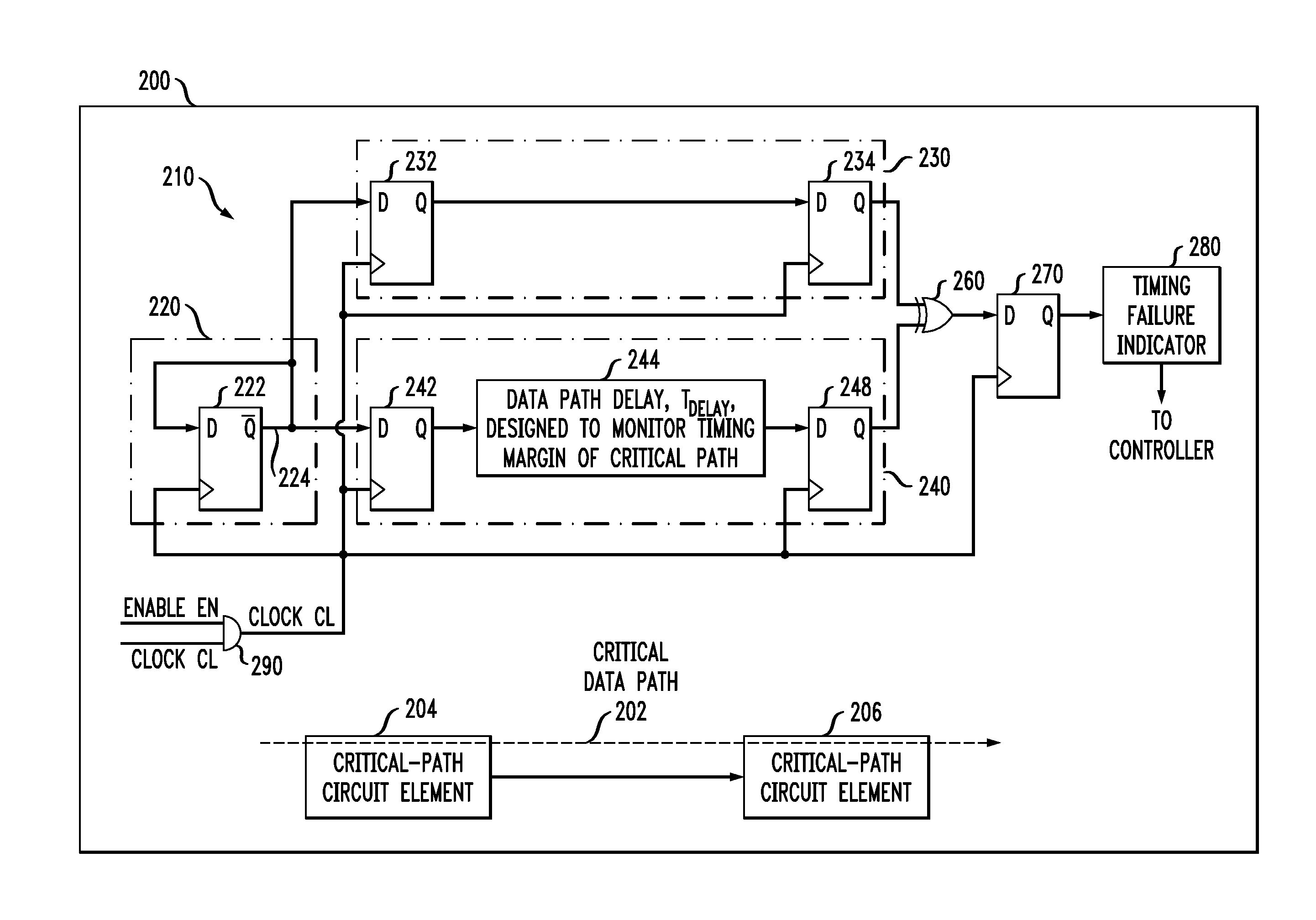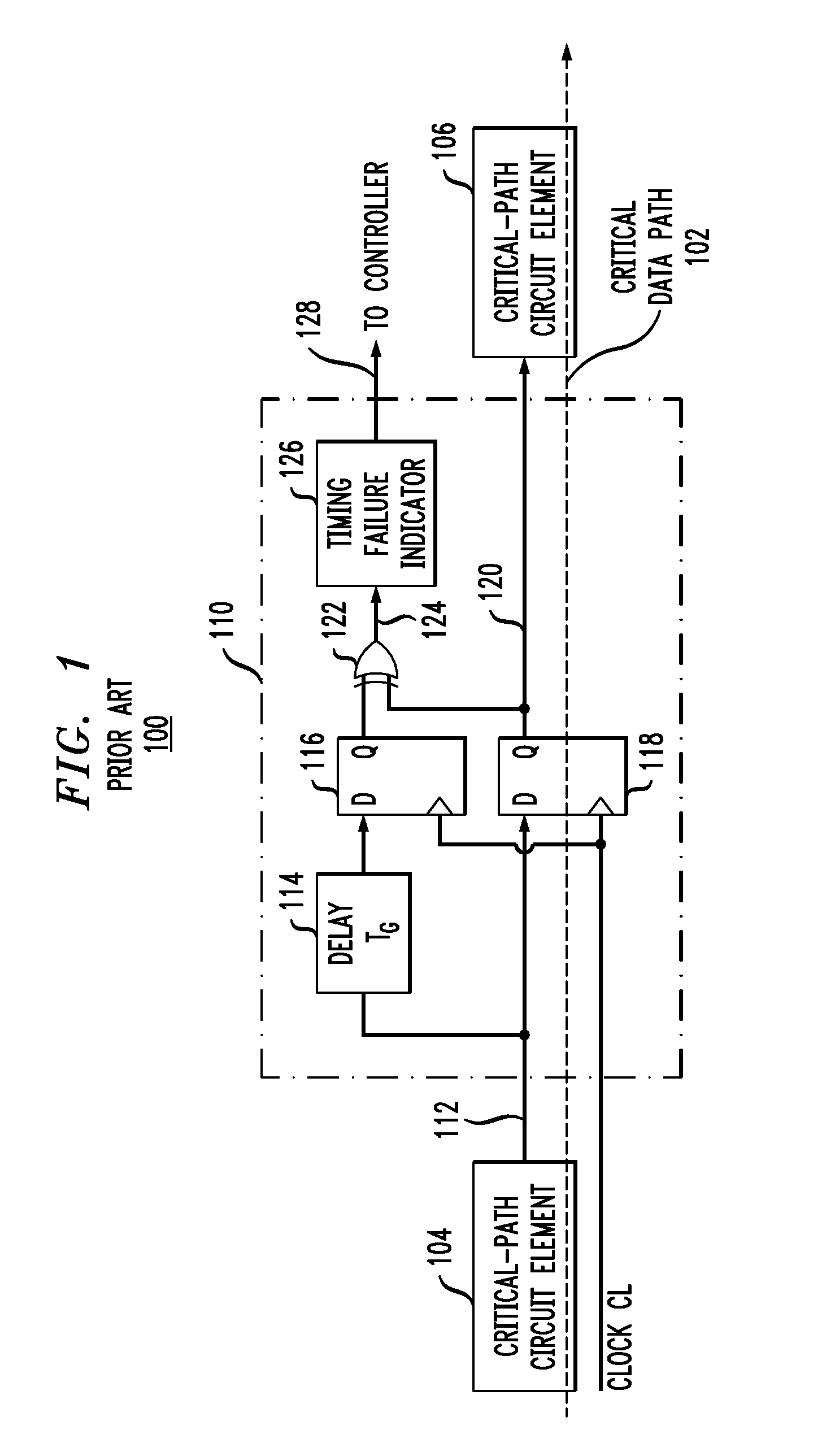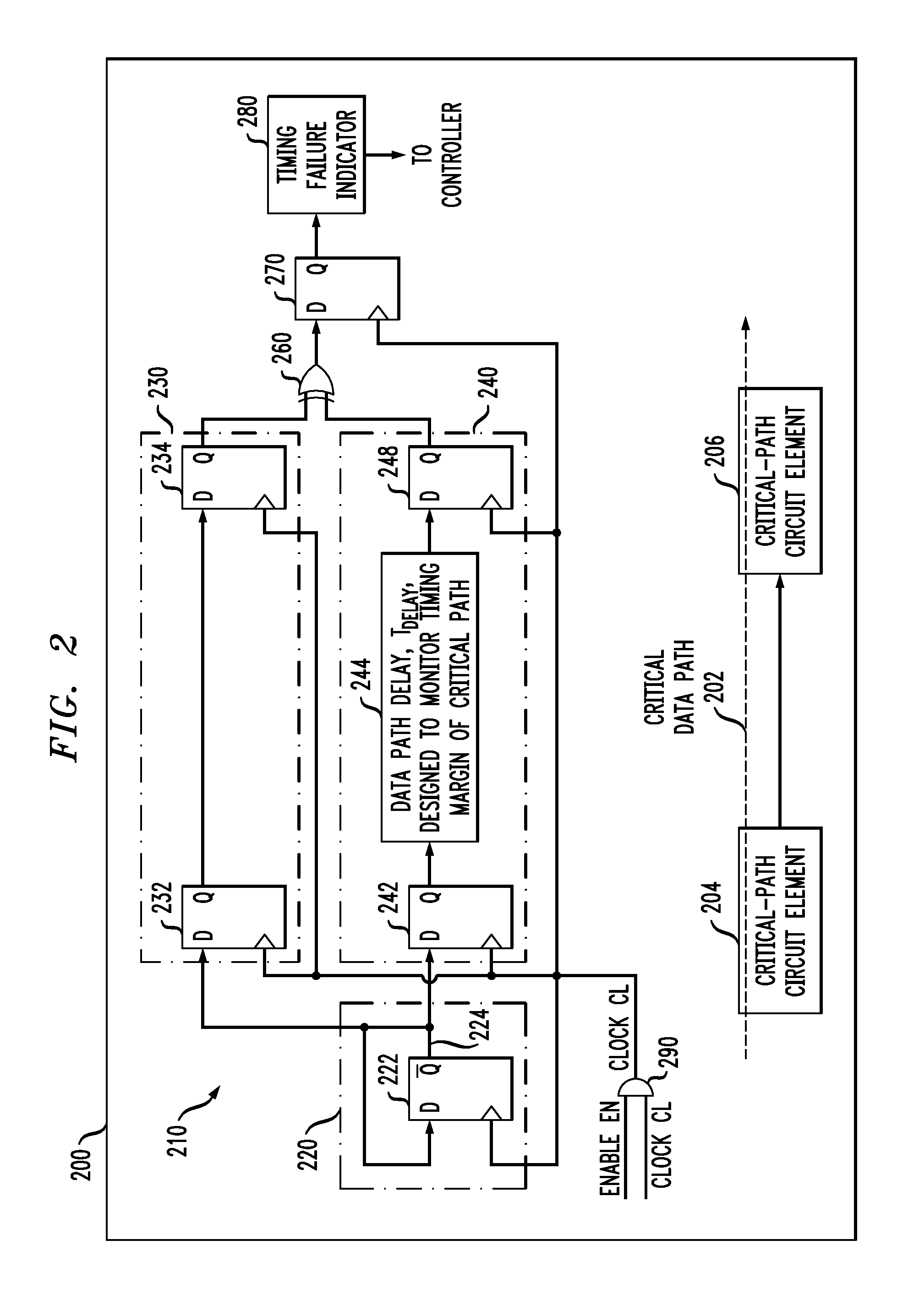Critical-path circuit for performance monitoring
- Summary
- Abstract
- Description
- Claims
- Application Information
AI Technical Summary
Benefits of technology
Problems solved by technology
Method used
Image
Examples
case 1
Timing Margin Met With No Excess Margin
[0042]FIG. 5 illustrates the timing for Case 1, in which the target timing margin is met with no excess margin. In Case 1, the design value for the sum of the delays (i) from the clock CL to output Q of flip-flop 342, (ii) through gross-delay element 344, and (iii) through fine-delay detector 346 (e.g., the time for signal TRIN to travel to signal TROUT) is selected to be equal to about one clock period (i.e., the target timing margin is assumed to be minimal, such that little or no slack exists).
[0043]A data logic value 1 is latched into flip-flops 332 and 342 in FIG. 3 on the first rising edge of the clock CL, as shown at time t1 in the timing diagram in FIG. 5. Accordingly, the Q outputs of flip-flops 332 and 342 transition from a logic value 0 to a logic value 1.
[0044]Just before the second rising edge of the clock CL at time t2 in FIG. 5, by design, the 0-to-1 transition will be observed across the entire gross-delay element 344 and the ou...
case 2
Timing Margin Met With Significant Excess Margin
[0046]FIG. 6 illustrates the timing for Case 2, in which the target timing margin is met with significant excess margin. In Case 2, as in Case 1, the design value for the sum of the delays (i) from the clock CL to output Q of flip-flop 342, (ii) through gross-delay element 344, and (iii) through fine-delay detector 346 is selected to be equal to about one clock period (i.e., the target timing margin is assumed to be minimal, such that little or no slack exists). In Case 2, however, it is assumed that a combination of clock-distribution slow down and / or data-path speed up over time has resulted in the 0-to-1 transition occurring farther down the delay line than originally designed.
[0047]Initially, a logic value 1 is clocked into flip-flops 332 and 342 on the first rising edge of clock CL, as shown at time t1 on the timing diagram in FIG. 6. Accordingly, the Q outputs of flip-flops 332 and 342 transition from a logic value 0 to a logic v...
case 3
Not Met With Setup Violation
[0049]FIG. 7 illustrates Case 3, in which the target timing margin is not met, and a setup violation is detected. In Case 3, as in Cases 1 and 2, the initial value for the sum of the delays (i) from the clock CL to output Q of flip-flop 342, (ii) through gross-delay element 344, and (iii) through fine-delay detector 346 is selected to be equal to about one clock period (i.e., the target timing margin is assumed to be minimal, such that little or no slack exists). In Case 3, however, a combination of clock-distribution speed-up and / or data-path slow-down over time has resulted in the 0-to-1 transition occurring so far up the delay line that the target timing margin is exceeded, and a setup violation occurs.
[0050]In Case 3, at time t1 in FIG. 7, a logic value 1 is clocked into flip-flops 332 and 342 on the first rising edge of clock CL. Accordingly, the Q outputs of flip-flops 332 and 342 transition from a logic value 0 to a logic value 1. Just before the s...
PUM
 Login to View More
Login to View More Abstract
Description
Claims
Application Information
 Login to View More
Login to View More - R&D
- Intellectual Property
- Life Sciences
- Materials
- Tech Scout
- Unparalleled Data Quality
- Higher Quality Content
- 60% Fewer Hallucinations
Browse by: Latest US Patents, China's latest patents, Technical Efficacy Thesaurus, Application Domain, Technology Topic, Popular Technical Reports.
© 2025 PatSnap. All rights reserved.Legal|Privacy policy|Modern Slavery Act Transparency Statement|Sitemap|About US| Contact US: help@patsnap.com



